PAINTING WITHOUT RESTRICTIONS
Diversity of styles
20th century
A diversity of styles: Max Beckmann paints political atrocities
In contrast to all previous eras and movements, the 20th century was not characterized by one common artistic style, but rather by a diversity of styles. Placed side by side, contemporaries such as Max Beckmann, Francis Bacon and Niki de Saint Phalle represent the development from an era-encompassing defined style to artists with a variety of visual languages that are fully independent of one another. Although their styles are so diverse, however, they are all modern masters. The artist from this period with the highest profile today is Max Ernst.
Max Beckmann was obsessed with painting. He wanted to use it to capture “the mystery of being”. “I would crawl through all the sewers in the world in order to paint”, he wrote to his wife in 1915. With his own “dreadful, vital sensuousness” he penetrated the visible world and, by artistic means, revealed the truths lying behind it.
The First World War and the horrors he experienced first-hand as a medical orderly left him disillusioned. What happened to compassion or altruism, where was God? From that point on, catastrophes and failure became an important part of his oeuvre.
The painter rejected abstraction, which many of his contemporaries devoted themselves to. His works are bursting with expressiveness. He painted using a new, radical figurative method: angular, cold and with clear contours. His strict composition lends the paintings something inescapable – fitting to the authoritarian powers of his time. He used black lines as grids for his compositions, and they later appear in the foreground as the outlines typical of Beckman’s work, giving his figures their harshness and intensity. Over the course of time the painter, who is often classified as an expressionist, began to combine an increasing number of painting methods in one work. As result, thin glazes, which make use of the structure of the canvas as a design element, are next to areas thick with paint – some matt, some glossy, depending upon use of turpentine.
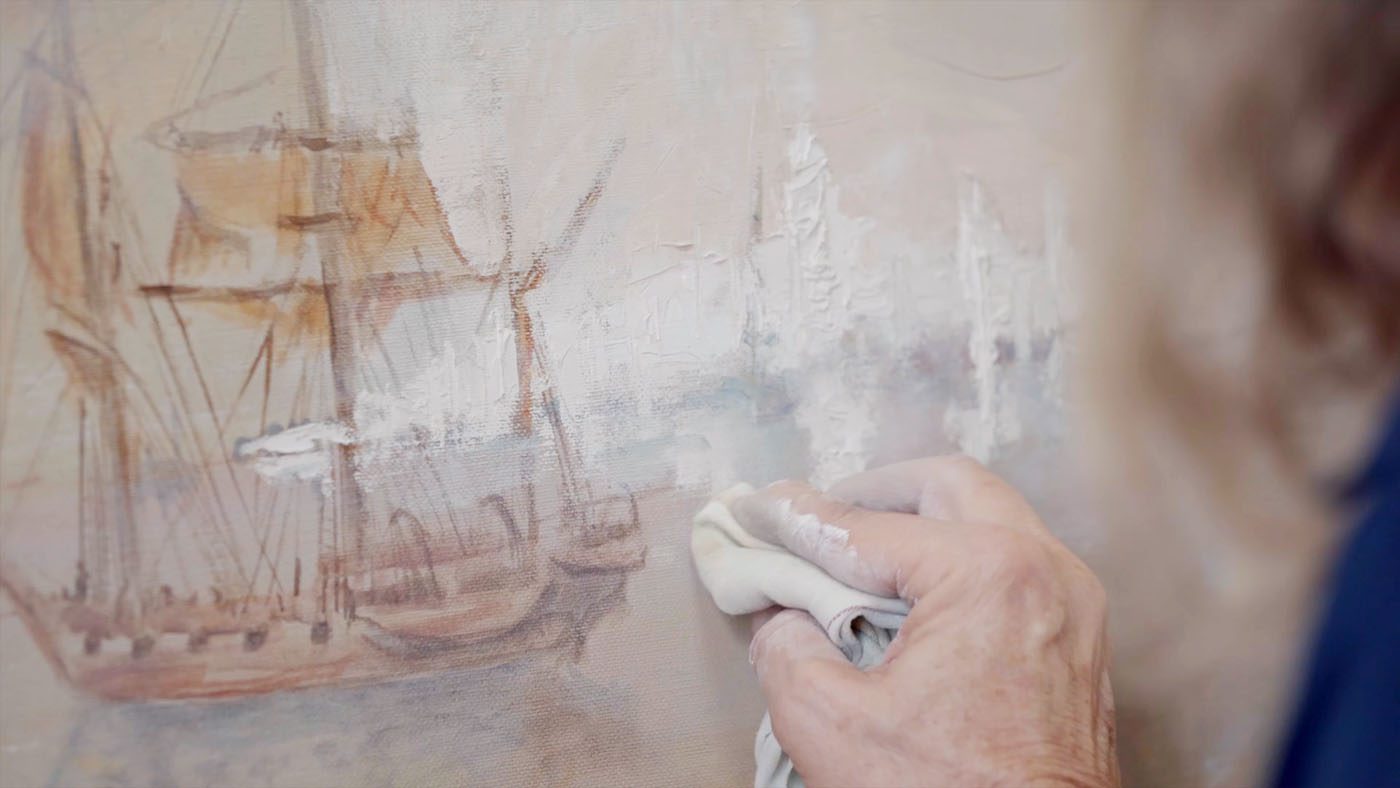
Almost 100 years after the murder of Rosa Luxemburg, Wolfgang Beltracchi addresses the topic using the artistic voice of Max Beckmann from the 1940s. The work “Eden” portrays the torture of the German Communist Party leader as sexualized and – as was typical of Beckmann’s later works – full of symbolism.
After the end of the First World War, Beckmann saw that the streets were filling with embittered soldiers, the country was in danger of drowning in starvation and chaos, and left and right-wing movements were emerging (he personally sympathized with Socialism). The liquidation of the German Communist Party leader Rosa Luxemburg led him to create a lithograph for the folio “Die Hölle” (Hell). The third of ten prints portrays the Communist leader being tortured shortly before her death. Together with Karl Liebknecht, she was kidnapped after the failure of the Spartacist Uprising and taken to Hotel Eden, where she was interrogated and tortured by soldiers and officers. Beltracchi’s large-scale painting titled “Eden”, using the artistic voice of Beckmann from 1948, has been transferred from paper to canvas, a method not untypical for the 20th century artist. Wolfgang Beltracchi has Beckmann looking back on the horrific event from a distance of nearly three decades. This is symbolized by the self-portrait of Beckman in the middle of the painting, as well as the reminiscences of his contemporaries Max Pechstein and Otto Dix. The painting shows the development of Beckmann’s artistic voice from 1919 up to the late 1940s. The scene is now portrayed in an interpretative, religious and mythological manner. The photo gallery shows how Wolfgang Beltracchi painted “Eden”.
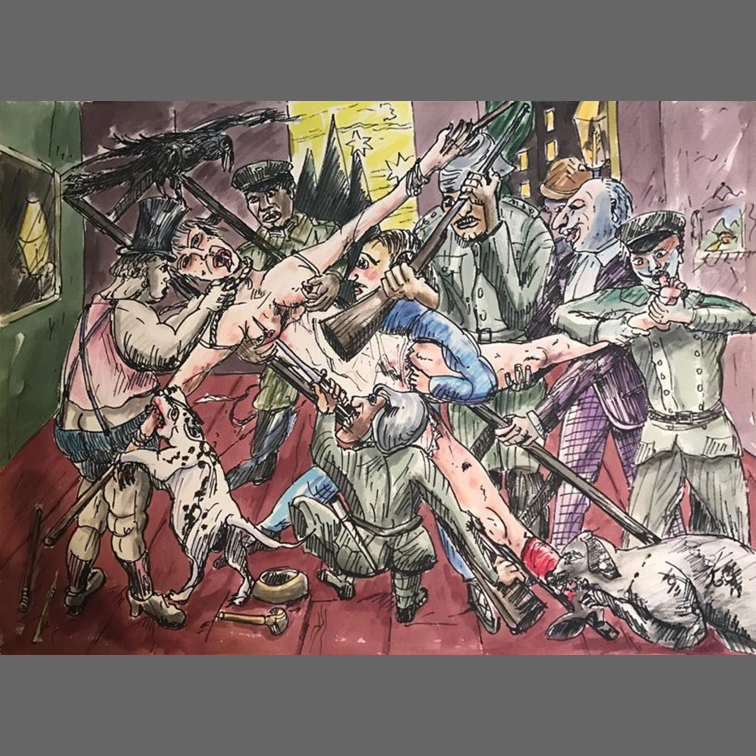
Various studies are made in preparation for the painting. Beltracchi only integrates the silhouette of Max Beckmann in a central position of the planned work at a later phase − observant, distant, defensive.
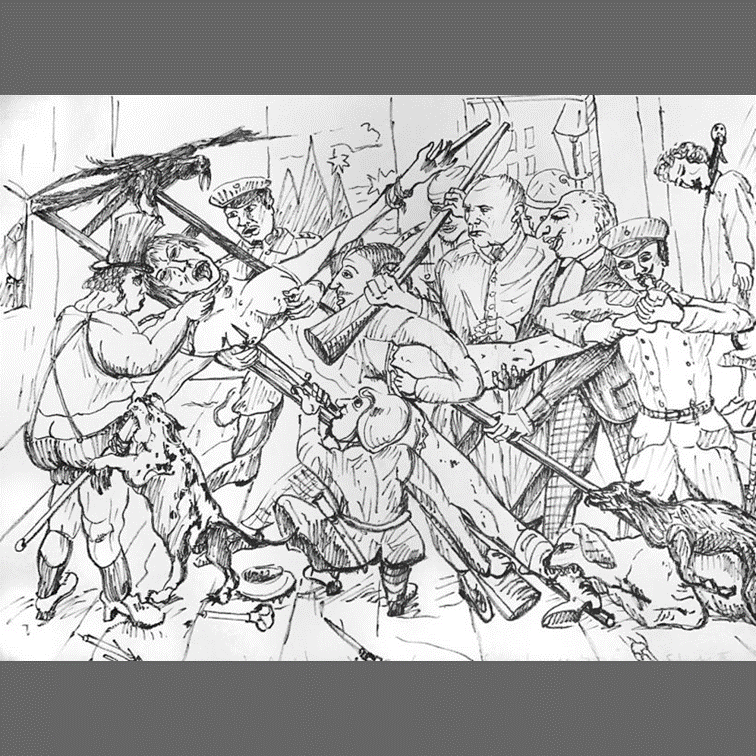
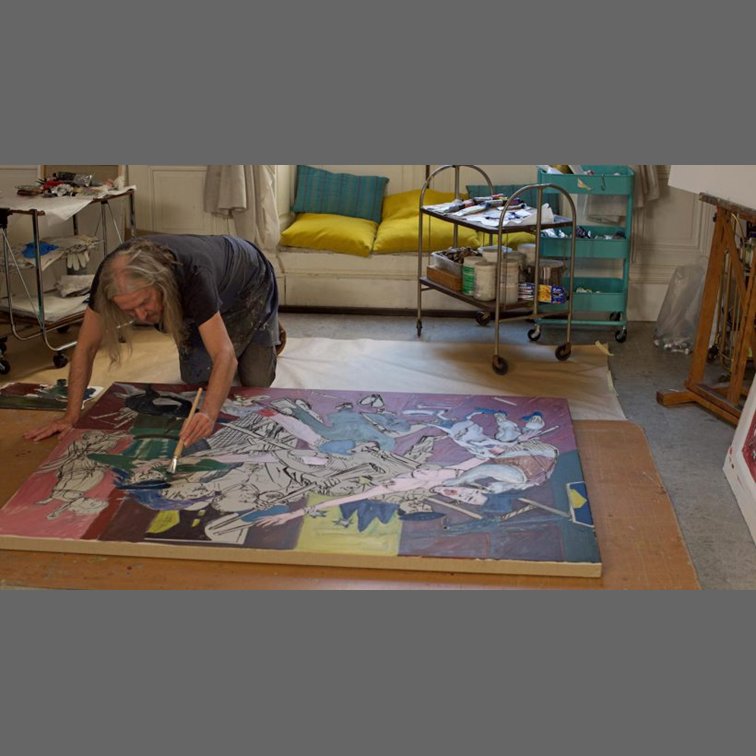
One feature of Beckmann’s personal style of working was applying the background colors to the canvas, sometimes very thinly, while it was lying on the floor. In spring of 2017, Wolfgang Beltracchi utilizes this method in his studio in Southern France.
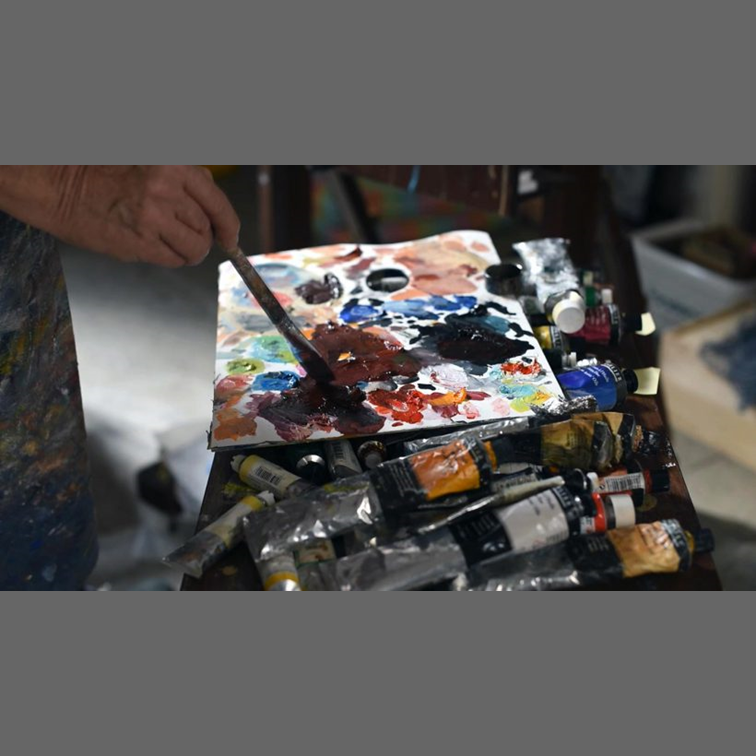
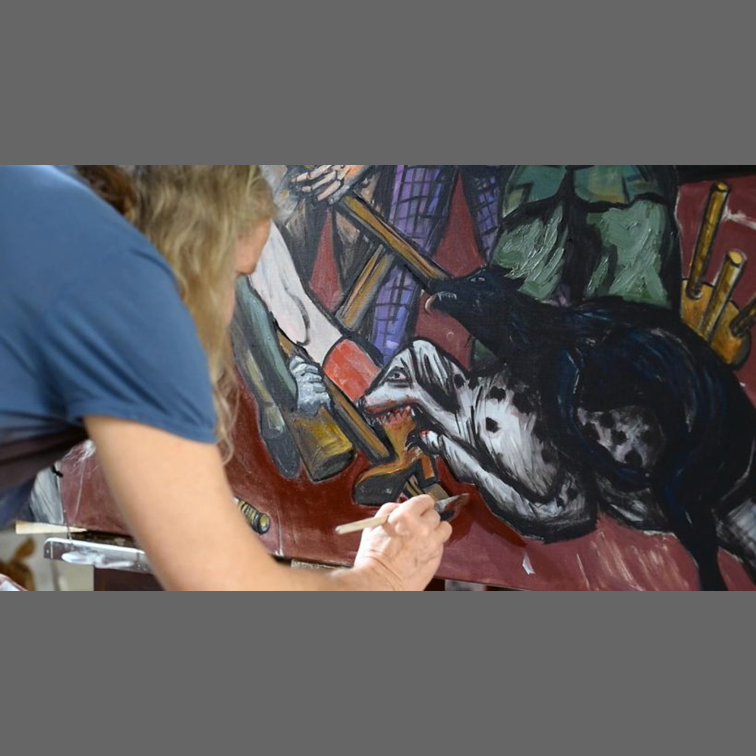
Eden includes numerous reminiscences of Max Beckmann’s contemporaries and their works. Among these are the copulating hell hounds from Otto Dix’s 1922 lithograph, “Der Lustmord” (The Sex Murder). A figure in a purple suit is reminiscent of George Grosz’s “Die Großstadt” (The City) from 1918 which Beckmann had already cited in his lithograph “Das Martyrium” (The Martyrdom).
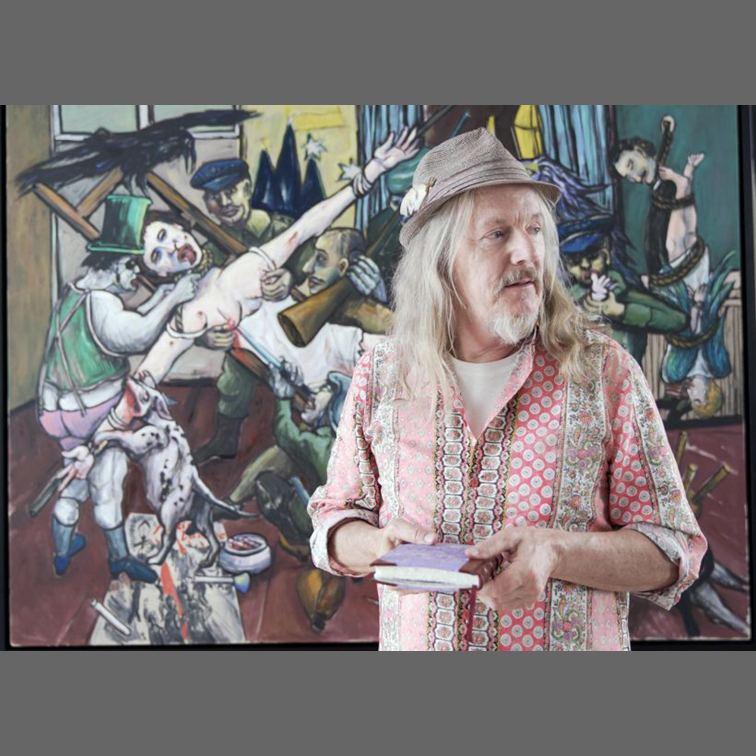
In his lithographic work, Max Beckmann appropriated the crucifixion scene and the helmeted soldiers from Lovis Corinth’s 1915 lithograph “Die Jungfrau von Orléans” (The Maid of Orleans). Beltracchi continues this train of thought and has Luxemburg die on a ladder to “Heaven.”
PAINTING IN THE 20TH CENTURY
1. Neuer Materialreichtum
A large pallet of colors, modern materials and the discovery that art doesn’t only work on canvas – the 20th century offered artists new ways and possibilities of evolving artistically. Being radically different and embracing unconventionality becomes the signature feature of work by artists such as Jason Pollock, Joseph Beuys and Andy Warhol.
2. Reaktion auf die Kriege
The First World War led to artistic scrutinization of violence and the misery that followed. This was reflected in works by Max Beckmann, George Grosz, Otto Dix and Käthe Kollwitz through their use of realism. However, other artists like Paul Klee and Hans Arp distinctly distanced themselves from realistic portrayals. By the end of the Second World War, ever more artists began to pursue a new approach to art.
3. Medial beeinflusst
The first photo was taken in 1826. The first motion picture was projected onto a big screen in 1895. Feeling that painting was nearing its demise, artists began to experiment with the new forms of media. Film and photography, however, turn out to have the surprising effect of inspiring new ideas in painting.
4. Wandelbar
Stylistic flexibility becomes noticeable not only in differences between artists, but also within their own respective oeuvres. Max Beckmann, born in 1884, begins as an impressionist and joins the Berlin Secession for a short time. He then moves on to develop his own figurative style, which he implements time and again in various ways. As a result, some of his works can also be categorized as expressionist and part of the New Objectivity movement.
5. Global inspiriert
In the 20th century, the world becomes more connected, there are more and more influences from all over the globe. A modern artist is familiar with art from Africa, the Americas and Asia. The influences are apparent, for example, in works by Wassiliy Kandinsky and Franz Marc, who are inspired by African masks. The contemporary Matisse, on the other hand, travels among others to Tahiti and experiments with new motifs. Stylistically, the 20th century is on a quest.
Eras of art in the KAIROS project
Medieval art
Early Netherlandish painting
Italian Renaissance
Mannerism
Early Baroque
Rokoko